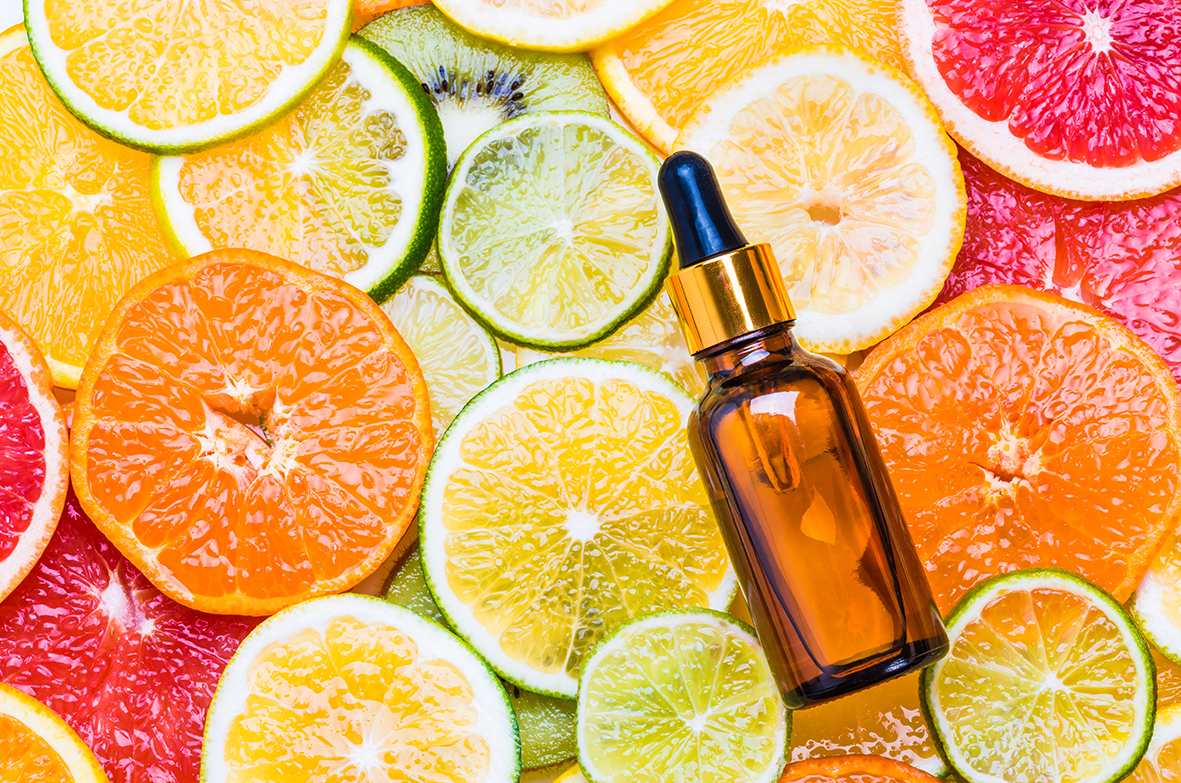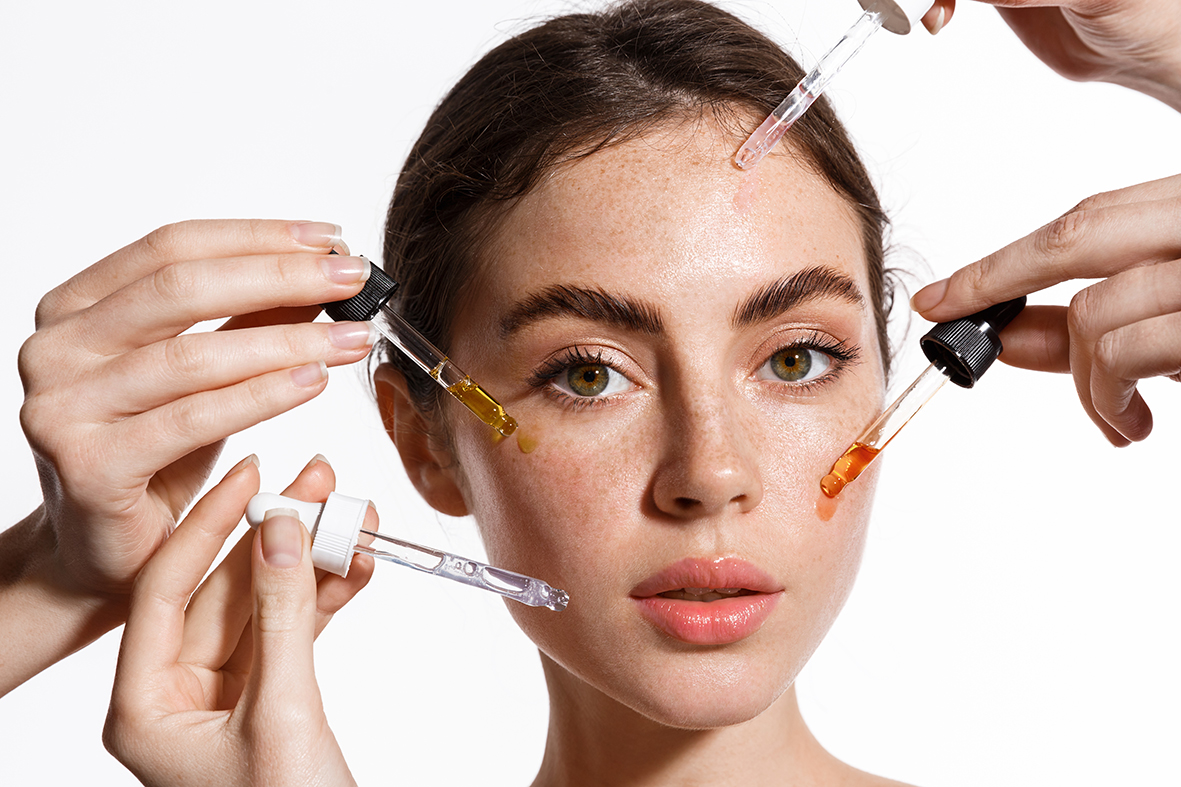Serum with vitamin C in two ways
Serum with vitamin C is suitable for tired skin that needs to brighten up. Make it together with us
Today we're going to show you how to make two vitamin C serums. Vitamin C acts as an antioxidant, scavenging free radicals and providing electrons to destroy them. It also maintains levels of alpha tocopherol (vitamin E), which acts specifically against free radicals. It is known for its anti-aging effects by helping to maintain the form of collagen molecules, which is responsible for the elasticity of our skin. Vitamin C helps with skin hyperpigmentation, and its effects make the skin glow. Together with vitamin E, it regenerates the skin and partially protects it from UV damage.

VITAMIN C SERUM - THEORY AND CALCULATION
Vitamin C is a very unstable substance, mainly in the form of L-ascorbic acid. It is water-soluble,
it is easily converted to dehydro-L- ascorbate (DHA), which is referred to as the ineffective form of ascorbic acid. Despite the light-tight container, up to 50% of L-ascorbic acid is converted to DHA (pH 3.5; temperature 25°C) within just one week of storage, which can also be seen in the change in colour of the serum to yellow-orange.
Lascorbic acid can be stabilised with several products. The most commonly used for stabilisation is vitamin E, which is contained in many popular serums. However, this serum is more difficult to manufacture as well as financially. Vitamin E, unlike vitamin C, is not well soluble in water, but it is well soluble in fats or oils. This means that, among other things, we have to use an emulsifier to prepare it and for this serum to last for a longer time, we need to use a preservative.
According to many studies, vitamin C has positive effects when used in the range of 5-20% and at a pH of approximately 3.5. However, our skin has pH values in the range of 5-6, so that the serum does not have irritating effects, it is necessary to equalize the pH to a pH closer to our skin through baking soda. Vitamin C is one of the photoprotective substances that needs to be stored in light-tight containers as it breaks down in the light.
Calculating the amount of vitamin C in serum: ????????????????????????????????á???????????? ℎ???????????????????????? ???? ???????????????????????????? ???? - ????????????????????????????????????????. ????????????????????????ý ???????????????????????? ????é????????
100
Calculation of the amount of 10% L-ascorbic acid serum: 10%. 20 ???????? = 2 ????????????????????????
100
VITAMIN C SERUM - THE FIRST SERUM
SHORT-LASTING SERUM WITH 10% VITAMIN C - RAW MATERIALS
INGREDIENTS
l-ascorbic acid 10%
glycerin 30%
distilled water 60%
Baking soda - - - -
SHORT-LASTING SERUM WITH 10% VITAMIN C - PREPARATION PROCEDURE
- Disinfect all the utensils and containers.
- Mix the distilled water and glycerine in a container.
- Add the given amount of L-ascorbic acid to the mixture, stir until the cloudy mixture becomes clear.
- In a new container, weigh out 8g of distilled water and add 2g of our made serum. Stir the solution and measure the pH. If necessary, adjust the pH to 4-4.2 using baking soda.
- Store the prepared serum in a light-tight container.
The preparation of this serum is very simple and takes approximately 5 minutes. However, it is IMPORTANT to note that this serum needs to be used within approximately one week, so we recommend making this serum
in a smaller volume.

VITAMIN C SERUM - SECOND SERUM
LONG-LASTING SERUM WITH 10% VITAMIN C - RAW MATERIALS
INGREDIENTS
A - aqueous phase
glycerin 5%
distilled water 67%
l-ascorbic acid 10%
B - oil phase
linseed oil 10 %
olive 1000 4%
C - oil phase after cooling
vitamin E, liquid tocopherol 96% 2%
D - phase after cooling of the mixture
EUXYL PE 9010 1%
Bicarbonate of soda - - - -
LONG-LASTING SERUM WITH 10% VITAMIN C - PREPARATION PROCEDURE
- Disinfect all the equipment and containers.
- Mix water and glycerine in a container, add ascorbic acid and stir the mixture thoroughly,
- until it turns from cloudy to clear.
- In a new container, weigh the ingredients of the oil phase and mix them together. Heat the mixture until the olivem 1000 emulsifier dissolves (~70°C).
- Add vitamin E to the oil mixture after it has cooled to ~40°C and stir.
- When both phases are approximately the same temperature, add the water phase to the oil phase and mix thoroughly.
- Weigh 8g of distilled water into a new container and add 2g of our made serum. Stir the solution and measure the pH. If necessary, adjust the pH to 4-4.2 using baking soda.
- Store the prepared serum in a light-tight container.
This serum is more difficult to prepare, but has a maximum shelf life of up to 6 months. To achieve a creamy consistency, you can blend the serum with a blender after adding the water phase to the oil phase, but be sure to even out the pH beforehand. We recommend applying both serums at night. And for better storage, wrap the containers with aluminum foil.
VITAMIN C SERUM - CONCLUSION
Do you use vitamin C in your skin care routine? As we've already learned from the introduction of this post,
including vitamin C in your skincare routine is a great step for your skin.
Do you like this tutorial for making a vitamin C serum? Be sure to let us know in the comments here or on Facebook. It'll be great feedback for us and for our customer Klara Olah, who made this post for you.
If you have any questions, please leave us a message at marketing@handymade.sk
Goodbye, friends.


